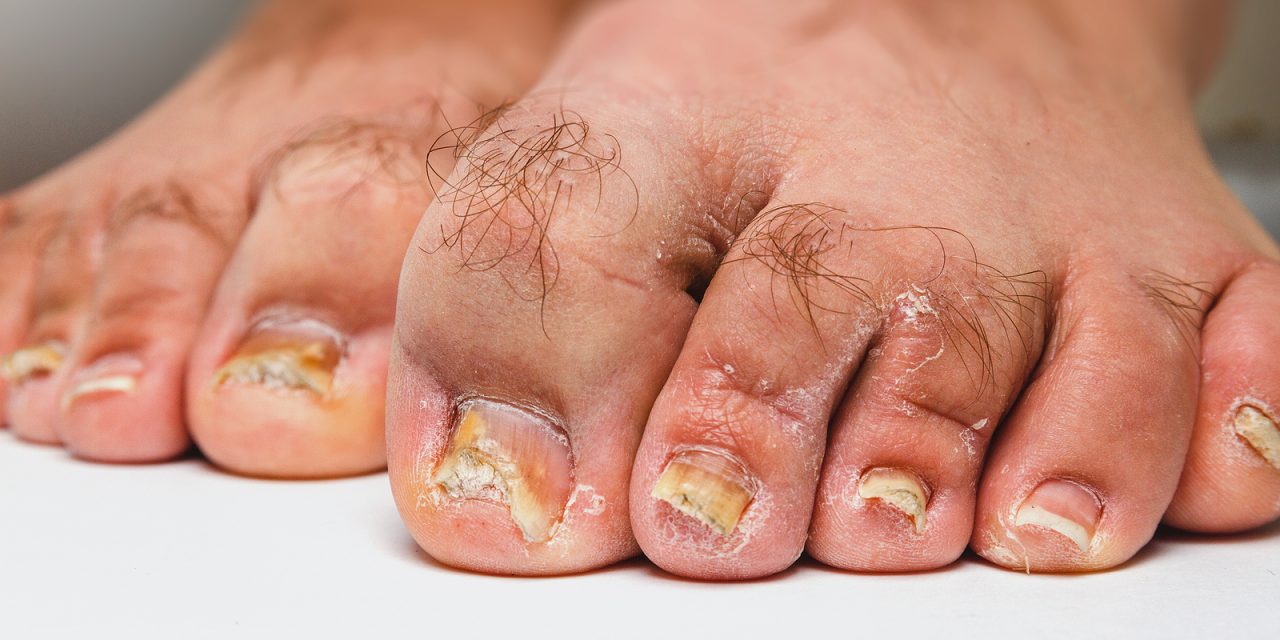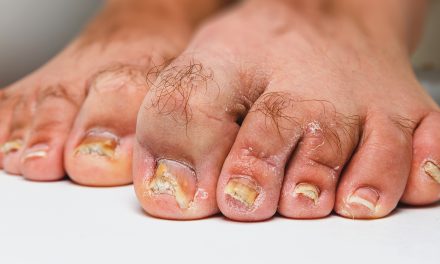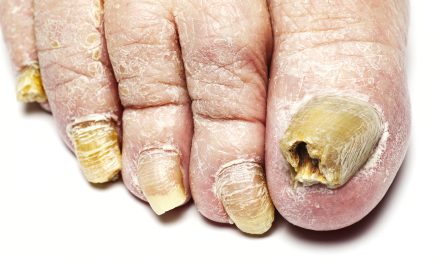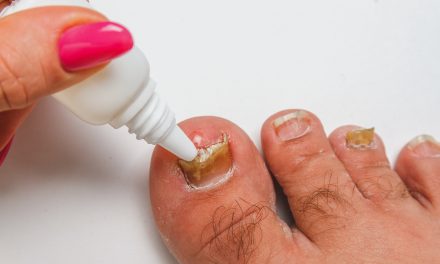Toenail fungus, also known as onychomycosis, is a common condition where a fungal infection takes root under the nail bed, causing the toenail to become discolored, thickened, and often misshapen. It can occur from a variety of fungal organisms, with dermatophytes being the most common culprits. This condition can be particularly stubborn, persisting until properly addressed. Recognizing the signs early and understanding the nature of toenail fungus can lead to more effective management and treatment.
Treatment options vary depending on the severity of the infection. Over-the-counter creams and ointments are available, although they may not be effective for all cases. Prescription medications, taken orally or applied topically, can be prescribed by a healthcare provider to help a new nail grow free of infection, gradually replacing the infected part. In severe cases, removal of the nail might be necessary. Home remedies, such as the use of oregano or tea tree oil, have been popular, but professional consultation is recommended to ensure appropriate treatment.
Key Takeaways
- Toenail fungus is a persistent infection that causes nail discoloration and thickening.
- A range of treatments exists, from prescription drugs to the potential removal of the nail.
- Early detection and consultation with a healthcare provider are essential for effective management.
Understanding Toenail Fungus
Toenail fungus, also known as onychomycosis, refers to a common condition where a fungal infection takes hold beneath the surface of the nail. This infection can cause the nail to discolor, thicken, and develop crumbling edges, an unsightly and potentially painful condition.
Definition and Synonyms
Toenail fungus, or onychomycosis, occurs when microscopic organisms, particularly types of fungi like dermatophytes, yeast, or molds, invade the nail bed. The term “tinea unguium” also denotes this condition when caused by dermatophytes. These organisms thrive in warm, moist environments, making toenails a common target for infection.
Common Causes and Risk Factors
Several factors contribute to the development of toenail fungus. Common causes include:
- Frequent exposure to moist environments: Habitual wearing of wet socks or shoes cultivates a conducive environment for fungal growth.
- Age-related factors: Increasing age is associated with reduced blood circulation and thicker nails, which are more susceptible to infections.
- Athlete’s foot: This skin infection of the feet can spread to the nails.
- Damaged nail: A crack or cut can allow fungi to enter under the nail.
Key risk factors include:
- Diabetes: Decreased immunity and circulation problems make diabetics more vulnerable.
- Heavy sweating
- History of athlete’s foot
- Walking barefoot in communal wet areas, such as swimming pools, gyms, and shower rooms.
Understanding the causes and mitigating the risk factors can help prevent toenail fungus and support effective treatment when applied promptly.
Identifying Toenail Fungus
Identifying toenail fungus early can greatly improve the likelihood of effective treatment. It is characterized by a range of visual changes to the nail and, in some cases, physical symptoms that signal an infection might be present.
Symptoms and Signs
Toenail fungus, also known as onychomycosis, typically starts with a white or yellow discoloration of the nail. As it progresses, the individual may notice the following symptoms:
- Nail discoloration: A change in the nail color to yellow, brown, or white.
- Changes in texture: The nail may become brittle, crumbly, or ragged.
- Thickening: Nails might thicken, becoming harder to trim.
- Separation from the nail bed: In some cases, the nail may separate from the underlying nail bed, a condition known as onycholysis.
- Pain or discomfort: While not always present, some individuals report pain around the nail area.
- Odor: An unpleasant smell may emanate from the infected nail.
These symptoms can vary in severity and might indicate the presence of toenail fungus. If self-care measures have not helped and symptoms persist or worsen, seeking medical advice is strongly recommended.
Stages of Toenail Fungal Infections
Toenail fungal infections typically develop in stages:
- Mild: Minimal discoloration and slight nail bed separation.
- Moderate: Increased discoloration, thickening, and the possible onset of pain.
- Severe: Significant nail thickening, robust discoloration, widespread nail bed separation, and intense pain.
In severe cases, the fungus may also cause a secondary rash or spread to other toenails, the skin, or the fingernails. The stage of the fungal infection will guide the choice of treatment and its urgency.
Professional Diagnosis
Before attempting to treat what one might suspect is toenail fungus, obtaining a professional diagnosis is essential. A medical specialist can provide accurate identification and recommend an effective course of treatment.
When to See a Doctor
One should consider seeking medical advice when noticeable changes in the toenails occur, such as thickening, discoloration, or separation of the nail from the nail bed. If these symptoms are accompanied by pain or discharge, it’s advisable to schedule an appointment with a healthcare provider.
Dermatologist Consultation
During a dermatologist consultation, the doctor will closely examine the nails and may obtain nail clippings or scrapings. These samples can be tested to determine the presence of a fungal infection. Dermatologists are skilled in differentiating between fungal infections and other conditions such as psoriasis, which can mirror the symptoms of nail fungus. If necessary, they might refer patients to a podiatrist for further specialized care.
Medical Treatments
Medical treatments for toenail fungus involve a combination of systemic antifungal treatments, topical antifungal therapies, and in some cases, advanced medical procedures. These strategies aim to eradicate the infection, support nail recovery, and reduce the risk of recurrence.
Systemic Antifungal Treatments
Oral medications such as terbinafine, itraconazole, and fluconazole are commonly prescribed for treating more severe or widespread toenail fungus infections. These systemic treatments work by eliminating the fungi from the inside out, promoting the growth of a new, healthy nail over time. It is important to note that oral treatments require monitoring for side effects and may not be suitable for patients with certain health conditions.
- Terbinafine: Usually prescribed for a course of 6-12 weeks, it has proven effective in many cases.
- Itraconazole: Prescribed in “pulse doses,” itraconazole is taken for one week per month for two to three months.
- Fluconazole: Taken once a week, the duration of treatment can vary depending on the severity of the infection.
Topical Antifungal Therapies
For milder cases or in conjunction with oral medications, topical treatments applied directly to the nail can be effective. Ciclopirox is an antifungal nail polish applied daily, with layers being removed weekly. Other topical solutions, like efinaconazole and tavaborole, are designed for easier penetration and may need to be applied daily for up to a year. Amorolfine can be applied weekly and is available over-the-counter in some countries.
- Ciclopirox: Daily application is required, with removal of accumulated layers on a weekly basis.
- Efinaconazole: A daily treatment designed to penetrate the nail and fight the fungus.
- Tavaborole: Another daily solution, often required for an extended period of application.
Advanced Medical Procedures
When medicinal treatments fail, more advanced procedures may be considered, including laser treatment and surgery. Laser treatment uses light to directly tackle the fungal infection, with several sessions needed to achieve results. Surgical nail removal might be necessary for severe or persistent cases, allowing direct application of antifungal agents to the nail bed and ensuring a new, healthy nail can grow back without the presence of fungus.
- Laser Treatment: A non-invasive option that requires multiple sessions over the course of a few months.
- Surgery: Reserved for the most intractable cases, involving the complete or partial removal of the nail.
Prescription Medication Information
When tackling toenail fungus, prescription medications available in both oral and topical forms can be potent allies. Appropriate use of these treatments after professional medical advice can lead to successful management of the fungal infection.
Oral Antifungal Options
Terbinafine: Known by its brand name, Lamisil, this oral medication has shown a high efficacy rate in treating toenail fungus. It’s often the first line of treatment due to its lower incidence of side effects and is taken once daily.
- Efficacy: Results in resolution of toenail fungus approximately 76% of the time.
- Considerations: Patients should undergo periodic liver function tests due to potential liver toxicity.
Itraconazole: Marketed as Sporanox, this antifungal works by inhibiting fungal growth. It’s taken in pulsed doses, meaning it’s administered in cycles.
- Efficacy: Proven to be effective, though sometimes considered after terbinafine.
- Considerations: Like terbinafine, monitoring liver function is crucial as it can have effects on liver health.
Topical Prescription Solutions
Ciclopirox: This antifungal nail polish, commercially known as Penlac, is painted on infected nails and surrounding skin once a day. Layers are removed with alcohol weekly before new applications.
- Usage: Daily application builds medication layers for cumulative effect.
Efinaconazole: Sold under the brand name Jublia, efinaconazole is a topical solution used once daily to treat toenail fungus.
- Advantages: Offers a safe alternative for patients with existing liver issues or those who prefer a topical treatment.
Tavaborole: Known by its brand Kerydin, this topical solution is another option for treating fungal infections of the nail.
- Usage: Applied daily, directly onto the toenail.
At-Home Remedies and Self-Care
When tackling toenail fungus, many individuals consider at-home remedies and self-care strategies as first steps towards management. These methods can be conveniently tried with items often found at home and involve simple lifestyle adjustments.
Natural and Alternative Treatments
Tea Tree Oil: Known for its antifungal properties, tea tree oil can be applied to the affected nail. It’s essential to use a cotton swab for application, usually twice a day, to maximize its effectiveness against toenail fungus.
- Eucalyptus Oil: Similar to tea tree oil, eucalyptus oil may also help due to its antifungal qualities.
Snakeroot Extract: A natural antifungal derived from plants, snakeroot extract can be a potent remedy when applied directly to the affected area.
Garlic: Although less common, crushed garlic has been mentioned as a home remedy for toenail fungus due to its antifungal compounds.
Apple Cider Vinegar: A soak made with apple cider vinegar can be a gentler approach, aiming to create an environment less hospitable for the fungus to thrive.
Incorporating these treatments into a daily routine may improve symptoms, but patients should be aware that results can vary, and evidence of effectiveness is largely anecdotal.
Lifestyle Adjustments
Maintain Foot Hygiene: Keeping feet clean and dry is crucial.
- Use antifungal powders to reduce moisture.
- Change socks regularly, especially after sweating.
Footwear Choices: Opt for breathable materials and avoid tight shoes. Wearing flip-flops in public showers or locker rooms can minimize the risk of contracting fungal infections.
Menthol: Some over-the-counter balms containing menthol can provide a cooling effect that may also offer temporary relief from itching and discomfort associated with toenail fungus.
It’s important to monitor the health of one’s toenails during and after these treatments. If there is no improvement or the condition worsens, consulting a healthcare professional is advised.
Prevention Strategies
To combat toenail fungus effectively, one must prioritize preventive measures focusing on meticulous foot hygiene and environmental considerations. Employing these strategies can significantly reduce the risk of developing toenail fungus.
Foot Hygiene Practices
Daily Foot Washing: Individuals should wash their feet with soap and water daily to maintain cleanliness, paying close attention to drying between the toes where moisture can accumulate.
Proper Nail Care: Trimming nails straight across and keeping them short prevents debris accumulation and reduces the risk of nail damage, which can be a gateway for fungal infections.
Environmental Considerations
Footwear Choices: Choosing breathable, moisture-wicking shoes helps to keep feet dry. It is also important to avoid tight-fitting shoes that can cause damage to the nails.
Sock Selection: One should opt for socks made of synthetic fibers that draw moisture away from the skin, as WebMD suggests. Changing socks frequently, especially if feet become sweaty, is critical.
By incorporating these specific tactics into one’s daily routine, the risk of toenail fungus can be significantly mitigated.
Potential Complications
Toenail fungus, when not addressed, can lead to significant health complications, particularly in individuals with underlying health conditions like diabetes or weakened immune systems. Effective management is crucial to prevent such outcomes.
If Left Untreated
If toenail fungus remains untreated, it can cause permanent damage to the nail, potentially leading to its loss. Chronic infection may make nails thick, brittle, and deformed. For patients with diabetes, the risks are heightened as their ability to fight off infections is compromised. This can lead to a greater likelihood of foot ulcers or other complications that, in severe cases, could necessitate amputation.
Secondary Infections
A secondary infection, such as bacterial cellulitis, can develop in the skin around the affected nails, especially if the skin becomes cracked or the nail separates from the nail bed. This is of particular concern for individuals with HIV or other conditions that suppress the immune system, as their bodies are less equipped to halt the spread of infection. Furthermore, if someone has a condition like psoriasis which affects the nails, a fungal infection could exacerbate nail problems. While it’s rare, there’s also a potential link, although not conclusively established, between longstanding toenail fungus and the development of squamous cell carcinoma, a type of skin cancer. Therefore, monitoring and treatment are essential in preventing these serious health issues.
Understanding Related Conditions
To effectively manage toenail fungus, it’s crucial to be aware of related skin and nail conditions. These disorders can present symptoms similar to toenail fungal infections and may also contribute to the overall persistence of the infection.
Skin and Nail Disorders
Skin and nail disorders often coexist with toenail fungus, creating a complex treatment scenario. Athlete’s foot, known medically as tinea pedis, is a fungal infection of the skin on the feet, frequently occurring alongside toenail infections due to the same group of fungi. Psoriasis of the nail can mimic fungal infections, presenting with pitted or irregular nail surfaces. Eczema, which causes itchy, inflamed skin, may also complicate toenail conditions by creating cracks through which fungi can enter.
Common Co-Infections
Toenail fungus can be accompanied by other infections that exacerbate the condition. Ringworm, or tinea corporis, not exclusive to the feet, can spread to the nails, significantly when skin hygiene is compromised. Jock itch (tinea cruris), though more common in the groin area, shares causative fungi with toenail fungus and athletes’ feet, indicating a potential for cross-infection or simultaneous infections. Identifying and treating these co-infections is paramount to controlling and eliminating toenail fungus.
Navigating Healthcare
It’s crucial to approach treatment through the proper healthcare channels when dealing with toenail fungus. Knowing whom to consult and understanding the financial aspects of treatment are key steps in addressing the condition effectively.
Finding the Right Specialist
Visiting a dermatologist or podiatrist is the recommended course of action for toenail fungus. They specialize in skin and nail conditions and can provide an accurate diagnosis as well as a tailored treatment plan. These specialists have the expertise to recommend topical treatments or prescribe oral antifungal medications, which are often more effective than over-the-counter options.
Insurance and Treatment Costs
Treatment costs can vary widely depending on the prescribed course of action and whether one has insurance. Typically, insurance plans will cover the cost of the doctor’s visit and may partly cover the cost of prescribed medications. However, it’s essential to check with individual insurers as coverage can differ. For uninsured patients, clinics may offer a sliding scale fee based on income or payment plans to manage treatment costs.
Frequently Asked Questions
Effective treatments and signs of healing are critical to understand in tackling toenail fungus. These FAQs provide trusted guidance for those seeking resolution.
What are the most effective treatments for toenail fungus?
The most effective treatments for toenail fungus typically include prescription antifungal medications and, in some cases, medicated nail polish containing ciclopirox.
How can you tell if toenail fungus is healing or dying?
Improvement in toenail fungus is often indicated by a reduction in nail discoloration and the growth of a healthy nail from the base.
Is it possible for toenail fungus to resolve without treatment?
While toenail fungus may occasionally resolve independently, treatment is usually needed to entirely eliminate the infection and prevent further complications.
What home remedies work quickly to treat toenail fungus?
Home remedies, such as the application of tea tree oil or vinegar soaks, may offer some benefits but tend to be slower and less effective compared to medical treatments.
How does Vicks VapoRub aid in the treatment of toenail fungus?
Vicks VapoRub has been reported to aid toenail fungus treatment due to its active ingredients, such as menthol and eucalyptus oil, but should not replace prescription treatments.
What should be done for severe cases of fungal nail infections?
Severe cases of fungal nail infections may require oral antifungal medications and, in some instances, surgical nail removal for extensive infections.






















